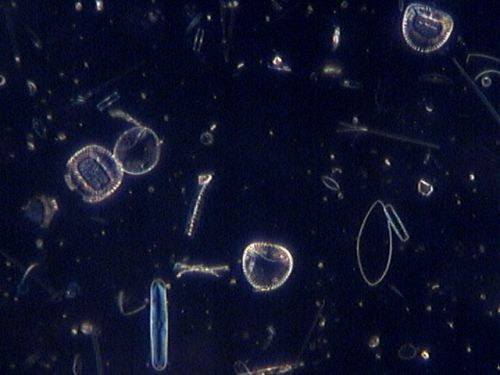
|
|
|
Program > • Session Natural EnvironmentMicroorganisms were the
first life forms to develop
on Earth, approximately
four billion years ago. Their
study is called microbiology, and began
with Anton van Leeuwenhoek's discovery of microorganisms in 1675, using a
microscope of his own design. Microorganisms are very
diverse prokaryotes or eukaryotes including bacteria, archaea, fungi,
yeats, microscopic algae and protozoa (planktonic flagellates and planarian).
Viruse are also considered by some microbiologists, whilst others consider them
as non-living particles. Most microorganisms are unicellular (i.e., single
particles), and microsopic, however some unicellular protists and bacteria (Thiomargarita
namibiensis, for instance)
are macroscopic and thus visible to the naked eye Microorganisms are ubiquist. They live in all parts of
environments found in nature: in fresh and marine waters, from surface to sediment; in soil; in hot springs;
in the atmosphere; deep inside rocks; and in leaving organisms. They colonize
every ecosystem, even the most hostile ones (for human beeing)
such as deserts, poles, geysers, deep ocean. In ecosystems, microorganisms are
critical to nutrient recycling,
acting as the most efficient decomposers. Microscopic phytoplankton is also responsible for about
half of the global primary production while its biomass is only about 2% of the
whole biomass on Earth. As some microorganisms are able
to fix nitrogen, they play an important role
in the nitrogen
cycle. Recent studies have also shown that airborne microbes may play a
role in precipitation and weather. Many micro-organisms are associated with plants or animals with which they maintain relations such as symbiosis, commensalism
or parasitism. Finaly, some
species are pathogenic and thus harmful as they grow within other organisms after ingestion or contamination by a wound, causing diseases
that can kill people, other animals, and plants.
Among all the microorganisms, prokaryotes are the most abundant unknown biodiversity
on Earth, and most of them are not cultivable.
Because of their high abundances, and their large variety of metabolic
activities which makes them ubiquitous, microorganisms represent a key
component in environmental studies and applications (both aquatic and
terrestrial). To enhance our understanding of the heterogeneity and
complexity of the microbial consortia, both in term of composition and
functioning, their direct analysis must be done at the single cell level and
requires a non-invasive interrogation of the cells. Single cell analysis has
added up to our understanding of microbial ecology in terms of identification,
abundance and functionality. Flow cytometry with cell sorting and static
cytometry, together with advances in fluorescent probes for assessment of cell
composition and functions have opened the field to many applications and
strongly advanced the field. This session will concentrate on new developments
and applications of single cell analysis of microbes and how it allows to gain
an accurate representation of populations and communities in cultured and
natural samples. Chairman : Dr. Raffaella Casotti (Laboratory of Functional and Evolutionary Ecology, Stazione Zoologica Anton Dohrn, Naples, Italy)
|


